Startling Statistic: Did you know that nearly 80% of motorcycle accidents involve adverse weather conditions? For every motorcycle rider passionate about the open road, understanding how weather impacts your safety isn’t just smart—it’s essential. The right weather tips for motorcyclists can mean the difference between arriving safely or dealing with dangers you never anticipated. Let’s uncover how you can confidently ride safely, come rain, shine, or anything in between.
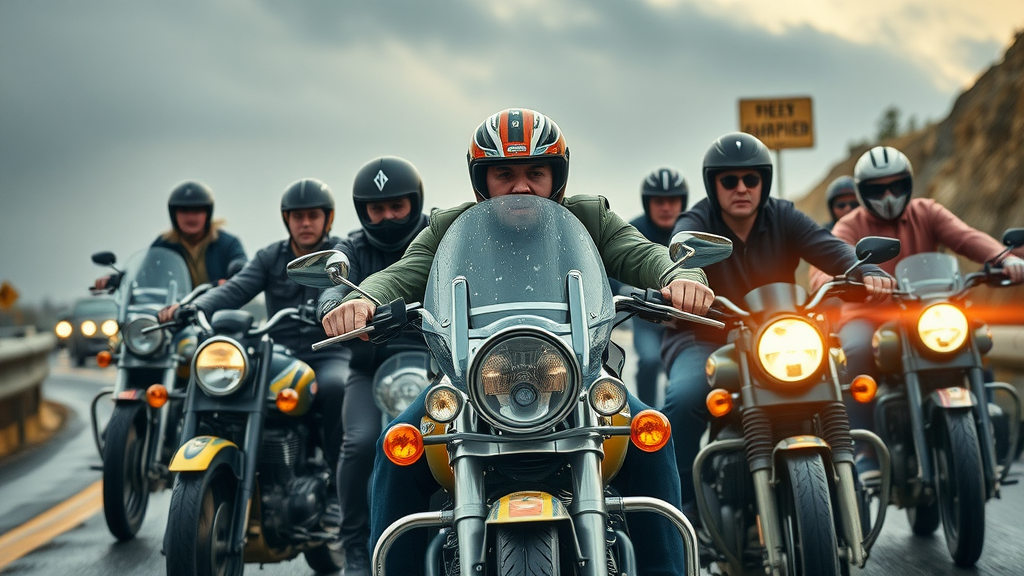
The Impact of Weather on Motorcycle Riding: Surprising Statistics Every Rider Should Know
"Nearly 80% of motorcycle accidents involve adverse weather conditions—understanding these risks is the first step to riding safely in any forecast."
Weather conditions—especially bad weather like rain, fog, or sudden cold snaps—pose unique hazards for every motorcycle rider. Where four-wheel vehicles might stay safe with little more than slower speeds, riding in the rain or cold weather directly impacts a motorcycle’s balance, visibility, and traction. Research consistently shows heightened accident risks: wet weather accounts for nearly half of all motorcycle accidents during inclement conditions, while icy roads during winter riding see rates spike even higher.
Motorcycle riders must realize that the risks aren’t just theoretical—statistics highlight the stark reality that failing to adjust for changing weather conditions greatly increases the chance of a motorcycle accident. Unfortunately, many riders misjudge the dangers of less-than-ideal skies, leading to unplanned skids or close calls. Everyone dreaming of blue skies and a perfect ride should always prepare for twists in the weather.
What You'll Gain From These Weather Tips for Motorcyclists
-
Up-to-date advice for handling bad weather and sudden weather changes
-
In-depth safety strategies for winter riding and riding in the rain
-
Gear and technology recommendations to enhance motorcycle riding safety in cold weather
-
Step-by-step guidance for staying safe in various weather conditions
By diving into these essential weather tips for motorcyclists , you’ll not only stay safe, but you’ll also maximize your enjoyment of the open road year-round. We’ll cover how to prepare before you ride, what gear makes a real difference in cold weather and rain, and proven road techniques to keep you in control—even when the weather changes unexpectedly.
Whether you enjoy solo rides, motorcycle group adventures, or urban commutes, these strategies are designed to ensure all motorcycle riders ride safely , adapt instantly, and minimize risks across any weather conditions.
Preparation Is Key: Weather Tips for Motorcyclists Before Every Ride

-
Checking local and regional weather conditions
-
Choosing the best weather app for motorcycle riders
-
Inspecting your motorcycle for winter riding or rainy conditions
-
Adjusting plans based on real-time forecasts
Every seasoned motorcycle rider knows: Preparation is everything . Before stepping out to ride a motorcycle, always check the weather —both local and regional forecasts—because what’s happening a few miles down the road can be dramatically different. Invest in a reliable weather app with real-time updates; this technology gives you an edge for identifying sudden temperature changes, storm fronts, or alerts for bad weather. For cold weather or winter riding, this kind of preparation can significantly reduce unexpected hazards.
An essential aspect of weather tips for motorcyclists is inspecting your motorcycle closely: double-check tire tread for maximum grip in rain, inspect brakes and lights, and verify that your turn signals are clean and functional. Making small adjustments—like pre-planning alternate routes during strong wind conditions—ensures that no matter the forecast, you’re ready to ride safely while making the most of every journey.
|
|
Key Preparations for Common Weather Conditions |
|
Weather Condition |
Key Preparation Tip |
|---|---|
|
Cold Weather |
Use layered, insulated gear |
|
Rainy Conditions |
Check tire tread for grip |
|
Sudden Weather Changes |
Plan alternate routes |
|
Windy Days |
Secure loose gear |
Essential Gear for Riding in Cold Weather and Rain
Heated Gear and Insulated Clothing: Cold Weather Motorcycle Riding Must-Haves
-
Heated gloves and vests
-
Waterproof boots and riding suit
-
Fog-resistant face shields for bad weather

Anyone who has experienced the bite of winter riding knows that heated gear and high-quality insulated clothing make all the difference. Heated gloves and vests allow you to stay warm and responsive in freezing temperatures—helping you ride longer without the distraction or danger of numb hands and fingers. Investing in a waterproof, insulated riding suit and boots will further shield you from rain and standing water, so you can avoid riding in misery when conditions deteriorate.
A fog-resistant face shield is an often-overlooked but invaluable component for riding in cold weather and bad weather. It improves visibility and allows you to confidently tackle sudden temperature drops, icy patches, and foggy mornings. By building a gear setup that covers every weather scenario, every motorcycle rider can stay safe , comfortable, and in full control of the road ahead.
Best Motorcycle Gear for Riding in the Rain
-
High-visibility rain gear
-
Waterproof luggage and storage solutions
-
Grip-enhancing gloves
Riding in the rain requires its own set of specialized gear. Start with a brightly colored, high-visibility rain suit to increase your visibility and make yourself stand out in low-visibility weather conditions. Effective waterproof luggage ensures your essentials and electronics remain dry, giving peace of mind during downpours or storms. And don’t underestimate the importance of grip-enhancing gloves; wet handlebars are slippery, and the right gloves ensure you can always steer and brake with confidence.
Riders should also keep a small emergency kit with basic repair tools, a flashlight, and a power bank for your smartphone. When every second counts, especially in bad weather , being able to call for help, fix a flat, or signal your location can make a critical difference.
"Investing in the right cold weather and rain gear can double your comfort and halve your risk on the road."
Road Techniques for Bad Weather: Weather Tips for Motorcyclists in Action
Adjusting Riding Style for Winter Riding and Rainy Conditions
-
Smooth throttle and brake control during wet weather conditions
-
Maintaining increased following distance in cold weather
-
Reading road surfaces to spot hidden obstacles or ice patches
No matter how well-equipped you are, adapting your riding technique is critical to ride safely in inclement weather. Smooth, gradual throttle and brake inputs keep control predictable, especially when roads are slick from rain, ice, or hidden oil patches. Maintaining a greater following distance than usual gives you time to react to sudden stops or obstacles, which are more common during winter riding and in wet weather conditions.
Vigilance is key—constantly read road surfaces for hazards like standing water, gravel, fallen leaves, or black ice. Practice gentle steering and gradual speed changes to avoid sudden loss of traction, and always remember that painted lines and metal covers become unexpectedly slick in rain. Mastering these techniques greatly reduces your risk of a motorcycle accident, even in the most challenging weather.
Stay Safe and Ride Safe: Practicing Defensive Motorcycle Riding
-
Identifying hazards unique to riding in cold weather
-
Maneuvering safely on slippery roads
-
Using reflective gear for added safety
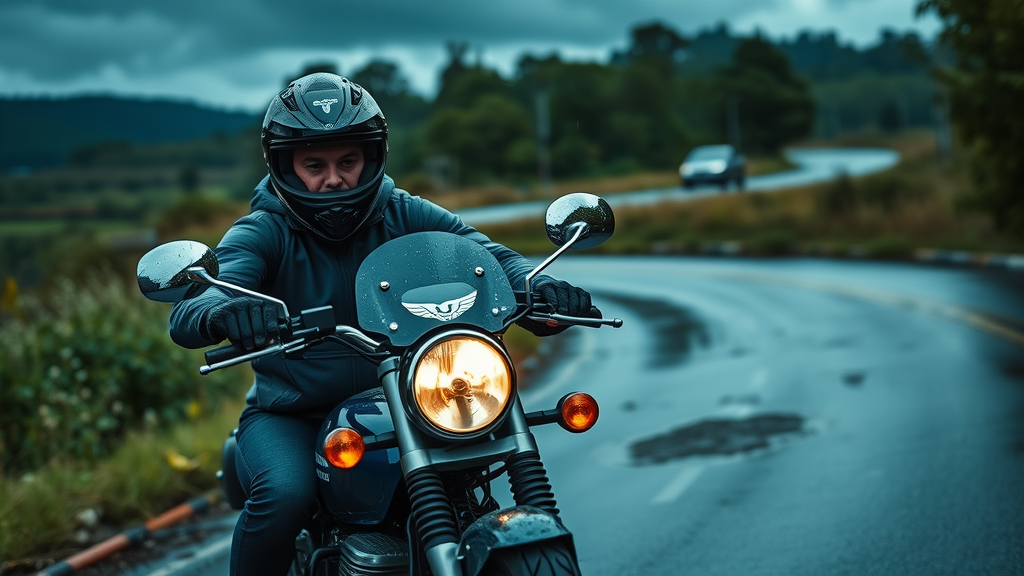
Being a defensive rider in unpredictable weather conditions means proactively identifying unique hazards, such as black ice in cold weather or hydroplaning risks during heavy rain. Always enter corners and intersections more cautiously, and avoid sudden swerves or acceleration. Reflective or fluorescent riding gear makes you much more visible to other drivers, which is crucial during fog, dusk, or rainstorms when overall visibility is reduced .
Another tip for all-weather safety is checking that your lights and turn signals are in perfect working order before every ride. This step will increase your visibility and ensure you are always easily seen by other drivers, which is vital for ride safe principles. Remember, staying alert and adaptable helps significantly reduce the dangers that can catch other motorcycle riders off guard.
Weather Conditions Every Motorcyclist Should Watch For
-
Cold fronts and sudden temperature drops
-
Heavy rain and reduced visibility
-
Wind gusts and crosswinds during motorcycle riding
-
Unexpected storms and hazardous weather conditions
Motorcycle riders must remain vigilant about changes in the weather forecast, especially signals of cold fronts sweeping in or sudden drops in temperature. Such changes can make once-manageable routes treacherous and amplify risks of black ice or sudden downpours. Heavy rain drastically reduces both your visibility and the ability of others to see you, increasing the likelihood of motorcycle accidents if you don’t adapt your speed and technique.
Wind gusts and crosswinds can be particularly dangerous when riding a motorcycle, affecting balance and lane stability, especially on highways and over bridges. And, of course, always exercise caution when there’s even a hint of an approaching storm—sometimes the safest choice is to avoid riding altogether until conditions stabilize. Proactive awareness of your riding environment and up-to-date forecasts underpins every effective weather tip for motorcyclists .
|
|
Hazardous Weather and Precautionary Actions |
|
Hazardous Weather |
Precautionary Action |
|---|---|
|
Black Ice |
Reduce speed, avoid sudden moves |
|
Heavy Rain |
Slow down, increase visibility |
|
Fog |
Use low beam, stay alert |
Adapting Motorcycle Riding Plans Around Weather Tips for Motorcyclists
-
Re-routing transitions during storms
-
Postponing or canceling rides for safety
-
Group ride communication in bad weather
Smart motorcycle riders always have a backup plan for unexpected weather. When storms or hazardous weather conditions appear on your radar, consider re-routing to safer roads or postponing your trip. Sometimes, the best way to ride safe is to simply wait until conditions improve, especially during winter riding where temperature fluctuations can happen quickly.
Group rides require special communication—use hand signals, radios, or smartphone apps to alert fellow riders about road conditions or hazards in real time. Keeping everyone aware and on the same page dramatically decreases risks and keeps the group together even when weather throws a curveball. These adaptive strategies empower every motorcycle rider to make the safest choices for themselves and others.
People Also Ask: Common Weather Questions for Motorcyclists
Is 52 degrees too cold for a motorcycle?
-
Most riders can safely ride at 52 degrees with the proper cold weather gear; however, wind chill can significantly decrease comfort and increase risk of cold-related issues.
What do motorcycle riders do when it rains?
-
Experienced motorcyclists slow down, wear waterproof gear, avoid sudden movements, check tire pressure and tread, and seek shelter during heavy rain if necessary.
What is the best weather app for motorcycle riders?
-
Popular choices include Weather Underground, MyRadar, and AccuWeather, all offering real-time weather conditions crucial for motorcycle riding safety.
How cold is 40 degrees on a motorcycle?
-
At 40 degrees, wind chill while riding can make temperatures feel much colder; hypothermia risk increases, making heated gear and layers essential for safety.
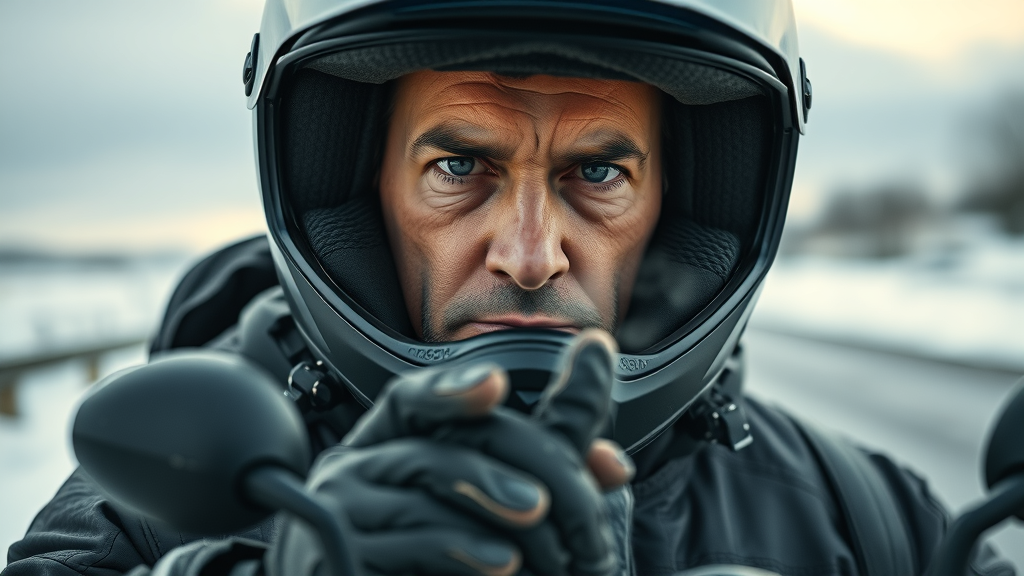
Expert Recommendations: Weather Tips for Motorcyclists from Seasoned Riders
"No ride is worth risking safety—always plan your motorcycle riding around the most up-to-date weather conditions."
Veteran motorcycle riders agree: no ride, no matter how tempting the open road, is worth taking if the risk outweighs the reward. Continuous learning, upgrading your riding gear, and embracing technology can significantly reduce exposures to hazards and improve the quality of every journey.
Experienced motorcyclists recommend regular training sessions in controlled environments, particularly for mastering emergency stops and low-traction maneuvers. Join local riders’ groups for shared real-time weather updates and support. Don’t be shy to invest in premium gear or weather tracking gadgets—protecting your health and bike should always take priority over aesthetics or short-term costs.
Frequently Asked Questions on Weather Tips for Motorcyclists
-
What's the best way to prepare for a sudden weather drop? Always carry an extra thermal layer in your luggage. Compact, heated gear is a small investment that can make a big difference in unpredictable conditions.
-
How can I spot black ice during winter riding? Black ice is almost invisible. Watch for glassy, reflective patches—especially in shaded or elevated areas. Be cautious, slow down, and test road traction gently if you suspect ice.
-
Should I invest in heated gloves or jackets for cold weather? Absolutely! Heated gloves and jackets are widely recognized by seasoned riders for not only enhancing comfort but also boosting your focus and dexterity during long, cold rides.

Top Takeaways: Stay Safe with Proven Weather Tips for Motorcyclists
-
Always check current and forecasted weather conditions before motorcycle riding
-
Invest in high-quality cold weather and rain gear
-
Adjust your riding style for enhanced safety—especially during bad weather
Start Implementing These Weather Tips for Motorcyclists Today
Prepare for every forecast and make these weather tips for motorcyclists your riding routine. By investing in the right riding gear, adapting your technique, and staying alert, you’ll ride safe and enjoy the open road in any weather.
Riding a motorcycle in varying weather conditions demands preparation and adaptability to ensure safety and enjoyment. For comprehensive strategies on navigating wet conditions, the article “ Riding a Motorcycle in the Rain ” offers valuable insights. It emphasizes the importance of reducing speed, avoiding sudden movements, and maintaining a safe distance to enhance control and visibility during rain. Additionally, “ Motorcycle Safety Tips for Riding in Bad Weather ” provides guidance on gear selection, such as waterproof suits and antifog visors, and highlights the necessity of adjusting riding techniques to accommodate slippery roads. By integrating these expert recommendations, riders can confidently tackle diverse weather scenarios, ensuring both safety and the thrill of the open road.
 Add Row
Add Row  Add
Add 
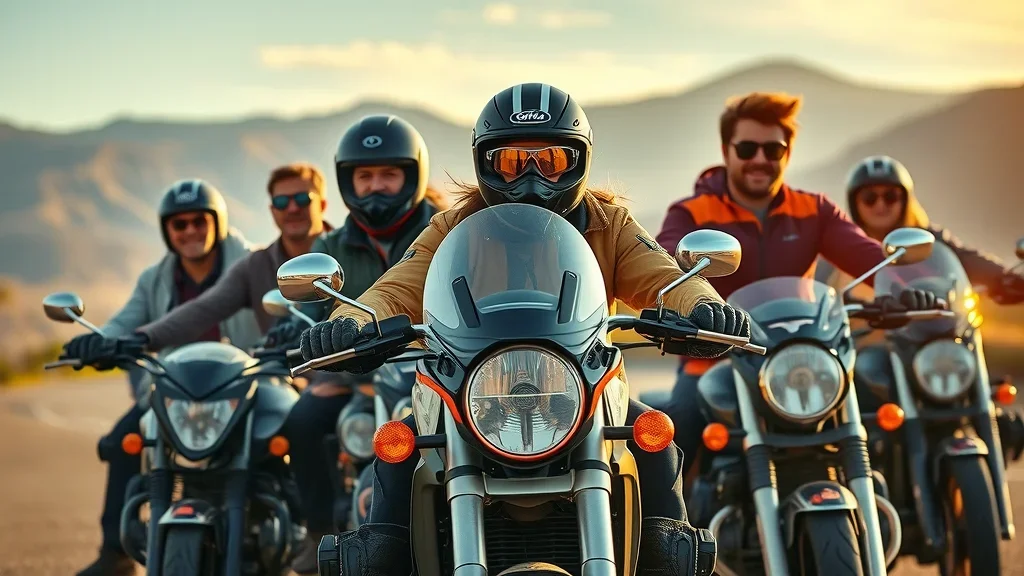

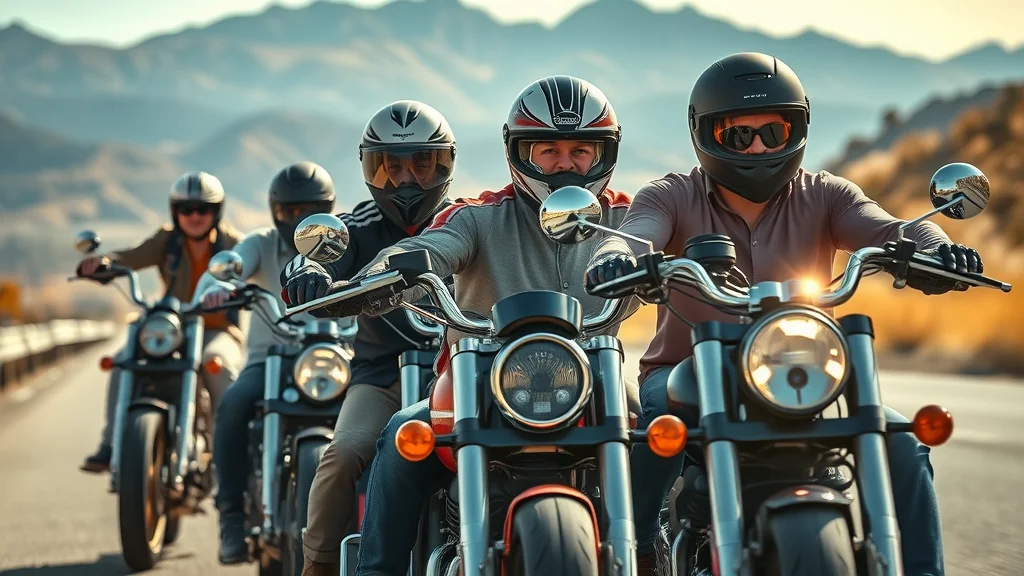
Write A Comment